
Each muscle fiber in the body is a single, cylinder shaped cell.
- Subject:
- Science
- Provider:
- Utah Education Network
- Author:
- Visual Learning Company
- Date Added:
- 02/28/2010

Resources created or licensed by the Utah Education Network

Each muscle fiber in the body is a single, cylinder shaped cell.
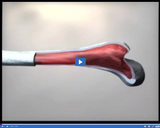
Red marrow is extremely important in producing red blood cells.

The skeletal system, made up of bones and the materials that connect them, is the body's framework.
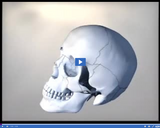
Depicts bones in the skull, which are attached to one another by immovable joints.

Smooth muscles are involuntary muscles. They can contract without us thinking about it. The bladder and intestines contain smooth muscle.

The knobs at the end of many bones are made of spongy bone, which contain many spaces.

The diversity of rotifers is stunning, and this program shows many different species. Planktonic rotifers have special adaptations for open water life. Nematodes (round-worms) include a number of important human parasites, seldom seen but easily found. Tree moss, leaf litter, and compost piles swarm with nematodes.
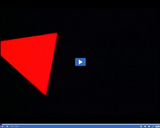
The term algae is a catchall for several evolutionary lines of photosynthetic organisms: dinoflagellates: red algae (plastids with chlorophyll A); diatoms, yellow-brown algae and brown algae (chlorophylls A and C); and green algae (chlorophylls A and B). This program explores the diversity, structure, ecological roles and modern classification of these vital primary producers.
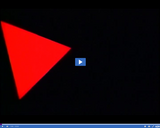
The term algae is a catchall for several evolutionary lines of photosynthetic organisms: dinoflagellates: red algae (plastids with chlorophyll A); diatoms, yellow-brown algae and brown algae (chlorophylls A and C); and green algae (chlorophylls A and B). This program explores the diversity, structure, ecological roles and modern classification of these vital primary producers.

Phylum Annelida, the segmented worms include earthworms and aquatic worms such as Tubifex (class Oligochaeta), marine worms including Nereis and thousands of other species that live mostly in muddy ocean habitats (class Polychaeta), and leeches (class Hirudinea). Segmentation, organ systems, and similar larval development unite these diverse worms.

Phylum Annelida, the segmented worms include earthworms and aquatic worms such as Tubifex (class Oligochaeta), marine worms including Nereis and thousands of other species that live mostly in muddy ocean habitats (class Polychaeta), and leeches (class Hirudinea). Segmentation, organ systems, and similar larval development unite these diverse worms.

Arthropods are the most successful phylum in the animal kingdom. The program describes the phylum characteristics and major groups of arthropods: crustaceans (copepods, ostracods, cladocerans, amphipods, isopods, eubranchiopods, decapods, and barnacles), chelicerates (scorpions, pseudoscorpions, whipscorpions, spiders, ticks, and mites), and the uniramians, a major evolutionary branch that includes centipedes, millipedes, and insects. Throughout this program the focus is on adaptations, life cycles, and evolutionary relationships.

Arthropods are the most successful phylum in the animal kingdom. The program describes the phylum characteristics and major groups of arthropods: crustaceans (copepods, ostracods, cladocerans, amphipods, isopods, eubranchiopods, decapods, and barnacles), chelicerates (scorpions, pseudoscorpions, whipscorpions, spiders, ticks, and mites), and the uniramians, a major evolutionary branch that includes centipedes, millipedes, and insects. Throughout this program the focus is on adaptations, life cycles, and evolutionary relationships.

The surprising range of behavior seen in living bacteria, how bacteria obtain nutrients through "external digestion," and how to use sterile techniques for culturing and studying them. The program shows the vital roles bacteria play in maintaining the biosphere through oxygen production (by cyanobacteria), decomposition and nitrogen fixation.
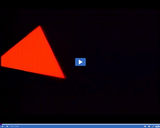
The surprising range of behavior seen in living bacteria, how bacteria obtain nutrients through "external digestion," and how to use sterile techniques for culturing and studying them. The program shows the vital roles bacteria play in maintaining the biosphere through oxygen production (by cyanobacteria), decomposition and nitrogen fixation.

The Phylum Chordata includes tunicates, sea lancelets, hagfish, and all familiar vertebrate animals. This program explores how these seemingly diverse animals evolved and how the group is unified by four characteristic structures: a hollow dorsal nerve chord, a supportive notochord, gill slits, and a post-anal tail. Key milestones in vertebrate evolution included improvements in swimming and feeding, the evolution of paired fins and primitive lung, movement onto the land, and the role of the amniotic egg.

The Phylum Chordata includes tunicates, sea lancelets, hagfish, and all familiar vertebrate animals. This program explores how these seemingly diverse animals evolved and how the group is unified by four characteristic structures: a hollow dorsal nerve chord, a supportive notochord, gill slits, and a post-anal tail. Key milestones in vertebrate evolution included improvements in swimming and feeding, the evolution of paired fins and primitive lung, movement onto the land, and the role of the amniotic egg.

Cnidarians begins with a remarkable series of observations on Hydra including: habitat, structure, feeding, nematocyst discharge, locomotion (by looping), and its sexual and asexual reproductive strategies. Obelia illustrates the two-stage life cycle found in many cnidarians. Examining the biology of jellyfish (class Scyphozoa), sea anemones, and corals (class Anthozoa) rounds out our treatment of phylum Cnidaria.

Cnidarians begins with a remarkable series of observations on Hydra including: habitat, structure, feeding, nematocyst discharge, locomotion (by looping), and its sexual and asexual reproductive strategies. Obelia illustrates the two-stage life cycle found in many cnidarians. Examining the biology of jellyfish (class Scyphozoa), sea anemones, and corals (class Anthozoa) rounds out our treatment of phylum Cnidaria.

They have spiny skins, internal skeletons and elaborate hydraulic systems used in locomotion and food getting--and they all live in the sea. Examining echinoderm life-styles shows that seastars (Class Asteroidea) are predators, brittle stars and basket stars (Class Ophiuroidea) are detritus feeders, urchins and sand dollars (Class Echinoidea) are herbivores, sea cucumbers (Class Holothuoidea) feed on detritus and plankton.